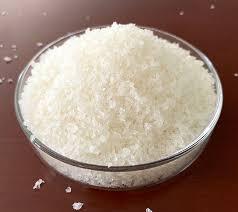Fish Gelatin Market: Growth Challenges Impacting Global Expansion and Scalability
The fish gelatin market has emerged as a viable alternative to traditional bovine and porcine gelatin, driven by increasing consumer demand for sustainable, religiously acceptable, and health-conscious products. Derived from fish skins, bones, and scales—often by-products of seafood processing—fish gelatin has found applications in food and beverages, pharmaceuticals, cosmetics, and biomedical fields.
Despite its advantages, the market’s long-term success is far from guaranteed. Several growth challenges are hindering its full potential, affecting everything from raw material sourcing to consumer acceptance and global trade dynamics. These challenges must be addressed for fish gelatin to scale effectively and compete on par with more established gelatin sources.

Raw Material Sourcing and Supply Chain Instability
One of the primary challenges to growth is inconsistent access to raw materials. Fish gelatin is sourced from the waste products of the fish processing industry, which means its availability is closely tied to the volume of fish harvested and processed. This dependency leads to several complications:
-
Seasonal and regional fluctuations in fish supply disrupt steady production.
-
Environmental concerns and overfishing have led to stricter regulations, reducing fish catch quotas.
-
Logistical challenges in transporting raw materials from remote coastal regions to processing facilities increase costs and delivery times.
These factors create supply chain instability that hampers consistent production, deters large-scale investment, and limits the scalability of fish gelatin manufacturing.
Technological and Functional Limitations
Fish gelatin differs chemically and structurally from mammalian gelatin. While it offers certain advantages like being more acceptable to halal and kosher consumers, it also has technical limitations that restrict its widespread adoption:
-
Lower gel strength and melting point make it unsuitable for some food and pharmaceutical applications.
-
Variability in composition based on fish species and processing methods affects consistency.
-
Limited thermal stability hinders its use in products requiring high-temperature processing or long shelf lives.
Addressing these limitations requires advanced processing technologies, such as enzymatic treatments or blending with other ingredients, which can be costly and technologically demanding—especially for small and mid-sized enterprises.
High Production Costs
Another significant growth challenge is the comparatively higher production cost of fish gelatin. Several cost-driving factors include:
-
Additional purification steps to remove fishy odors and flavors.
-
Specialized storage and transport needs due to the gelatin’s lower melting point.
-
Processing inefficiencies from varied raw material inputs across different fish types.
This makes fish gelatin less competitive in cost-sensitive industries, particularly in low-margin sectors like confectionery or mass-market foods. For manufacturers already facing inflationary pressures, switching to a more expensive input—even one with sustainability benefits—can be a difficult proposition.
Consumer Perception and Limited Awareness
Despite being natural and aligned with ethical consumption trends, fish gelatin still struggles with limited consumer awareness and mixed perception. Many consumers are unfamiliar with its benefits, and some associate marine-derived products with:
-
Strong, unpleasant odors
-
Potential allergens
-
Lower performance compared to traditional gelatin
This affects both demand and trust in fish gelatin products. Additionally, the growing popularity of plant-based diets and vegan alternatives poses a competitive threat. Consumers seeking animal-free options may prefer plant-based gelatin substitutes like agar, carrageenan, or pectin, further limiting fish gelatin’s growth scope.
Regulatory and Certification Barriers
Global expansion of the fish gelatin market is also slowed by regulatory complexity. Certification requirements differ by country, especially in relation to:
-
Halal and kosher standards
-
Food safety protocols
-
Labeling and traceability rules
Navigating these varying regulations can be time-consuming and expensive. For small producers or new entrants, compliance can be a significant barrier to market entry, particularly in countries with strict food import controls or evolving marine product policies.
Limited Research and Innovation Investment
The fish gelatin market still suffers from limited R&D investment compared to bovine or porcine gelatin. This slows innovation in areas such as:
-
Improving functional properties
-
Extending shelf life
-
Developing new applications in pharmaceuticals and biotechnology
Without robust R&D, fish gelatin producers struggle to match the performance characteristics of competing products or to develop compelling new use cases. This restricts growth opportunities and weakens their position in high-value markets.
Competition from Plant-Based and Synthetic Alternatives
As the demand for ethical and sustainable ingredients grows, plant-based and lab-grown gelatin alternatives are emerging as strong competitors. These products appeal to vegan consumers, avoid allergen concerns, and often have more consistent functionality. They also benefit from strong branding and growing consumer demand for cruelty-free products.
This competition limits the addressable market for fish gelatin and forces producers to differentiate on sustainability, traceability, or unique performance benefits.
Conclusion
The fish gelatin market holds strong potential due to its natural sourcing, religious acceptability, and alignment with sustainability trends. However, several growth challenges—including supply chain volatility, technical limitations, high production costs, regulatory complexity, and limited consumer awareness—are slowing its global expansion.
For the industry to thrive, stakeholders must invest in innovation, improve supply chain resilience, and enhance consumer education. Addressing these growth barriers will be crucial in transforming fish gelatin from a niche alternative into a mainstream solution across food, pharmaceutical, and cosmetic markets.
- Art
- Causes
- Crafts
- Dance
- Drinks
- Film
- Fitness
- Food
- Games
- Gardening
- Health
- Home
- Literature
- Music
- Networking
- Other
- Party
- Religion
- Shopping
- Sports
- Theater
- Wellness


